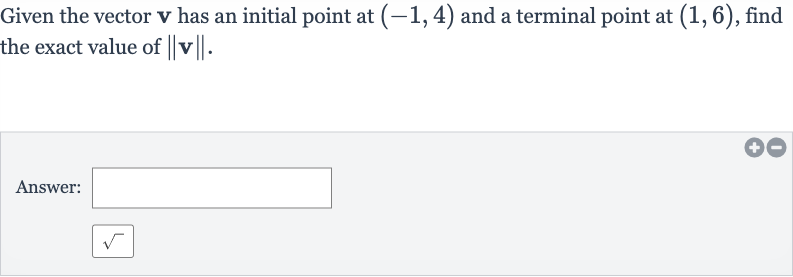AI tutor
Welcome to Bytelearn!
Let’s check out your problem:

Given the vector has an initial point at and a terminal point at , find the exact value of .Answer:
Full solution
Q. Given the vector has an initial point at and a terminal point at , find the exact value of .Answer:
- Calculate Differences: To find the magnitude of the vector , we need to calculate the difference in the -coordinates and the difference in the -coordinates between the terminal point and the initial point. The magnitude is the square root of the sum of the squares of these differences.Let's denote the initial point as and the terminal point as . The differences are and .
- Calculate Magnitude: Calculate and : Now we have the differences in the and coordinates.
- Use Pythagorean Theorem: Use the Pythagorean theorem to find the magnitude of the vector :Substitute and into the equation:
- Calculate Sum: Calculate the squares of and and their sum:
- Simplify Square Root: Simplify the square root to find the exact value of :This is the exact value of the magnitude of vector .
More problems from Transformations of absolute value functions: translations and reflections
QuestionGet tutor help
QuestionGet tutor help
QuestionGet tutor help
QuestionGet tutor help
QuestionGet tutor help
QuestionGet tutor help
QuestionGet tutor help
QuestionGet tutor help
QuestionGet tutor help
